The newest registered user is bitaacademy
Our users have posted a total of 44533 messages in 6560 subjects

WORLD CLOCK
"TRADE SECRETS by LIBBE TOUR LEGEND"
Valley of the Sun Casual Club :: Current Events ,,Announcements , Bulletin Board , 2 Pages :: CRAZY WGT SHIT
 "TRADE SECRETS by LIBBE TOUR LEGEND"
"TRADE SECRETS by LIBBE TOUR LEGEND"
16 Sep 2013 @ 7:26 AM
"TRADE SECRETS by LIBBE TOUR LEGEND"
through Good course, Management... most competitive game here at WGT is a Player that has your Number, and that's You, Playing against your Personal Best.... Good Luck...
Nov Th 2011
By LarkinPat1
=========================================================
************************************************
AWSOME STUFF
01 Feb
Let's do some maths: Trade secrets
07 Nov 2012 at 1:47 AM
Over the last couple of months, I have had several people enquire about my calculations. I have not responded. The reason there has been strong reluctance is that these calculations have matured over years of practice, and most would regard them as trade secrets earned. However, I am feeling particularly generous today, so in the world of WGT, consider it an early Christmas (lol).
Notes:
1. These calculations are subject to debate and should only be used as a rough guideline;
2. Depending on which course you play, there are deviations in the measurements;
3. Depending on the environment of the shot (confronting slope, wind etc.), there are many deviations in the calculations;
4. I strongly recommend the use and availability of a calculator;
5. Different courses produce significantly different green speeds;
6. Different clubs and balls produce different calculations.
Ok, let's get started...
WIND (a very common query!)
Nothing is set in stone. A 14mph wind is very different at St. Andys than it is at Congressional (CCC). At St. Andys, you feel it. At CCC, it seems soft. Keep in mind spin is a massive factor in relation to the impact of wind. Backspin elevates the ball making the impact of wind much stronger.
Consider the following examples:
1. Cleveland wedges: leaving spin at centre dot; 93yd approach; facing a 20mph wind. Play a full 100 wedge.
2. R11 irons: leaving spin at centre dot; 118yd approach; facing a 20mph wind. Play a full 120 PW (the slight increase in distance from a centre dot and the lower ball flight counter the wind).
3. R11 irons: Full back-spin (b/s) 200yd approach; facing a 20mph wind. Play a 3I at 220-225. The 3I at full b/s subtracts some distance, and with the elevated height from b/s at that distance I work with about, add 1yd - per 1mph wind in face.
Wind is a tricky beast. It is very hard to set in stone calculations, as in most instances it is based on feel/experience and environment. However, given the allowance of room to run, I am increasingly using mid-top spin with excellent results when wind is in face. Try it.
ROUGH
10%-15%: ignore.
20%-25%: for peace of mind I add 1% (lol). The concern is not the difference in distance, rather the reduced effect of spin.
30%-40%: Add 10% (multiply by 1.1). Note, the last 3-5% of the journey is likely to be run with irons, so be conscious of the slope you are facing.
40%-50%: Add 20% (multiply by 1.2). Note, the last 10%+ of the journey is likely to be run. Be conscious of slope. For maximum distance (e.g. on a par 5), hit a punch 3w. Be conscious of spin: maximum b/s tends to suck a lot of power.
Above 50% rough, for example deep rough and weeds, don't try and get too cute. Swallow your medicine. Take out a full 100yd wedge and play it smart.
BUNKERS
15%-20%: Add 5% (multiply by 1.05). Be conscious of run. Use your putter to study the green slope. Around the green a flop shot is very handy.
30%-40%: Add 15% (multiply by 1.15). Be conscious of run. Study the green first. A 20yd flop shot (full b/s) can be stretched to 13yds (flat run) from this bunker. From a fairway bunker, for maximum distance from this depth, with a low bunker face, try a punch 3I.
40%-50%: Add 25% (multiply by 1.25). Be very conscious of run. By this I mean, if facing an uphill slope, add. Downhill slope, subtract. Study the green slope.
UP-HILL & DOWN-HILL APPROACHES
Tricky beast. Steep downhill slopes present multiple challenges. The effect of wind is much stronger; the ball is likely to bite rapidly etc.
Steep up-hill slopes are just as tricky. The main concern being the lack of ability for the ball to bite.
Down-hill, for each 3ft down, I subtract about 1yd from the distance. However, wind becomes a very strong factor. Up-hill, for each 3ft up, I add under 1yd to the distance. The ball will not bite steep uphill (mid-iron+), so provide allowance and consideration for the ball to run. If you have a wedge in hand, the calculations change drastically, as it is still "drop & stop" and the height produced from the wedges dampens the impact of the elevation.
MULCH
Best calculation with a wedge in hand is multiply by 1.25 (add 25%).
GREENS
"Drive for show, putt for dough"
The Mother of all beasts. The difference between someone who plays everyday, and someone who rocks up on an ad-hoc basis is best demonstrated on greens. I can play the long game rapidly based on instincts, however with putting, I need to study the stroke. Make putting your best friend and this game seems simple.
On putts under 10ft, the dreaded mistake is leaving it short. Simply put, if it is short it has very, very little chance of going in (in golf talk they say 99% chance of not going in). If you're adjusting to a new green speed, in my books the perfect roll is 1-2ft past. With plenty of experience the exact weight can be found. The joy of the exact weight is that it makes the hole twice as big.
On short putts, give it a try. On long putts, try the following calculations to get a very warm weight.
Note: Green speeds vary significantly on different courses! On uphill putts you need to add distance, and on downhill putts be conscious that they can be very fast. These calculations are a guideline strictly for flat putts (based on my experience with the Nike putter).
Tournament greens: multiply distance by 0.77
Championship greens: multiply distance by 0.7
The effect of green speeds is best demonstrated at the Olympic Club (Oly) and Oakmont. The best of players will need to be fully focused to conquer these greens. Up-hill they are slow. On Championship greens, I work with 1 ft per 1 inch in elevation. On downhill putts they are lightning fast. I was facing a putt at Oakmont the other day: 12ft down 10 inches. Tapped it 2ft, and it went 13ft past. Take your time when putting.
Look at the following 2 quotes:
"I may be the only golfer never to have broken a single putter, if you don't count the one I twisted into a loop and threw into a bush" ~ Thomas Boswell
"It's a marriage. If I had to choose between my wife and my putter, well, I'd miss her." ~ Gary Player
Love your putter. Make it your best WGT friend. Tell yourself the hole is the size of a bucket.
By Ibbie, WGT Tour Legend
BETTER STUFF!
01 Feb
Putting
29 Nov 2012 at 7:33 PM
Before we get started on my insights, let's review what some professional golfers have to say about putters and putting:
- "Love and putting are mysteries for the philosopher to solve. Both subjects are beyond golfers." ~ Tommy Armour
- "Ninety percent of putts that are short don't go in." ~ Yogi Berra
- "Half of golf is fun; the other half is putting." ~ Peter Dobereiner
- "Selecting a putter is like selecting a wife. To each his own." ~ Ben Hogan
- "To many, Bolt's putter has spent more time in the air than Lindbergh." ~ Jimmy Demaret, on Tommy Bolt
- "Why am I using a new putter? Because the last one didn't float too well." ~ Craig Stadler
- "You have to put your putter out to pasture every so often, let it eat and get fat so it can get more birdies." ~ Greg Norman
- "There are many ways to punish a putter, such as burning, rusting, and drowning, but the most torturous is to drag it along the pavement out of the door of a fast-moving vehicle." ~ Dan Jenkins, demonstrating one of his Ten Basic Rules for Happy Putting
- "It's a marriage. If I had to choose between my wife and my putter, well, I'd miss her." ~ Gary Player
- "I curse the day the head of my putter fell off. It's kind of like losing one of your best friends."
~ Nick Price
- "You drive for show and putt for dough." ~ Al Balding
---------------
Ok, I hope you enjoyed that. In summary, most victories in golf are attributed to solid putting, and vice versa.
If you look at your bag, you will quickly realise your putter is the most important club. In a single round, the putter weighs more strokes than any other club.
In sharing the following thoughts, I feel it is easiest to progress in point form, as the ideas are quite diverse.
1. My long game is average! For example, ask my regular partners, and they will probably tell you I miss more fairways in some rounds than some very good players do in a year. My meter always has been and remains, moody, and prone to jumps. The Stat percentage of 82+ is mainly a result of playing St. Andys, in which the fairways are comparable to football fields. At one point, before I made St. Andys and RSG home, my driving accuracy was less than 70%.
2. Putting is no different. My meter is once again prone to Internet lag jumps. The hardest putts for me are dead straight putts. The most common green with this scenario is St. Andys Hole 9. To give you an idea of the extent of the "lag" jump, on that green I normally aim left of the hole (even though the green is dead flat), and play for a slight push with the putter. I have scored many 26s (-10) at St. Andys on the Front 9.
3. My putting is entirely built around MINOR pulls and MINOR pushes. When you blend in these strokes with the slope of the green, the effect is such that it is as good as a ding, furthermore it is very consistent. Let me explain. Visualise the green sloping right to left. Setup the putt as if you want to ding. Excellent. Now, if you click early, or pull the putt, in theory and based on a correct read, you will miss, as the pull becomes greatly exaggerated by the slope. Let's take the same putt again. Read and setup. This time, play for a MINOR push. You will observe that the slope swallows the push, and the putt is as effective as a ding. Furthermore, the process of MINOR pulls and pushes serves as insurance in the act of putting.
4. It is very rare for me to miss a putt under 5ft. In most instances, and based on the typical low to moderate break at that range, I leave the putt centre (or move it very slightly) and hit it firm on the correct side of the ding. The correct side of the ding is opposite to the slope. Meaning right to left slope equals push, and left to right slope equals pull. Do NOT build your putting around pulls and pushes. Reading the slope is the primary act and still essential. The act of MINOR pulls and pushes is to serve as an insurance policy. If you hit the ding every time and make a lot of putts, then this advice is inappropriate. Keeping in mind the earlier discussed "lag" jump I have detailed.
5. Having discussed the meter, let me explain the impact of putting on my game. In summary, it is my predominant strength. On WGT, I live by the philosophy of, "two bad shots and one good one still make birdie". If you scroll down to the 24 at RSG, it may interest you to know I had one putt of more than 30ft, and two putts more than 20ft. For me, that is a typical round.
Alright, beyond the meter, how do we read greens and putt?
6. Unless it's a monster putt, do NOT leave putts short! For putts under 30ft, I would estimate I leave about 1 / 50 short. I don't mind missing after a solid try, however the greatest sin in MY books is leaving a makeable putt short. Unless it is a very long or challenging putt, STOP trying to get the dead weight. If you consistently endeavour to get the dead weight, you will more than likely find yourself leaving many putts short. Simply put, it is too hard. The perfect weight for a missed putt under 30ft in my books is 1ft past. If I'm playing Alt. Shot and my partner shoots it 4ft past, that is preferred to leaving it 5 inches short. I will make the putt coming back. Give the putt a try. Don't be scared to hit it. Putt with confidence that you will hole the stroke.
7. Reading greens is by far my favourite part of playing on WGT. I love it! Some basics:
a). Take your time! If it's a flat 5ft putt, I can understand one taking 15 seconds, otherwise, have a good think about the stroke. I always take my time putting for putts outside the gimmie range. To illustrate the extent of the time taken, on a 20ft putt while playing solo stroke rounds, I can think and debate the putt for 5 minutes.
b). Before you make the stroke, set the parameters clearly in your mind. Agree on the exact weight or strength of the putt, and determine your ambition as to a pull, ding or push. Don't debate what you are going to do during the backswing of the putt. Be confident and clear about your judgement in advance.
c). Visualise the ball going in the hole! Now that we are clear about the parameters, we need to visualise the putt. Given the agreed strength, do you see the ball going in? My trick!? I draw a line with the mouse pointer as to the exact path I believe the putt should stroll through. Most athletes swear by visualisation. It works! See it before you do it!
d). Finally, if you have done the above, be confident you will make the putt. I generally tell myself that the hole is the size of a bucket, and surprisingly this is often the case.
8. Advanced Putting.
Have you ever looked at a putt and thought, "***! What is it doing!?"
Around Kiawah and RSG I often feel this is the case. Try this: switch to the chipping view. The chipping view outlines some slopes which are otherwise extremely difficult to determine through putting. The chipping view is just as effective as the putting view in determining the slope of the green. It is extremely effective when a putt has multiple directions, when a putt sits in the middle of two slopes, or when there is various speeds in the slope of a putt. Try it.
9. Heads Up!
Last, yet certainly not the least important, is heads up! Putting is the hardest aspect of golf for most, and WGT is no different. If you have a 51.33 Average and cannot afford a par during the round, I can understand your disappointment (LOL). However, in the reality of the game, you're going to miss putts, some more than others. Don't let it disappoint you. On several occasions I have missed a birdie putt and made par, only to be blessed with an eagle on the next hole. That's golf! It requires a very short-term memory of the bad strokes, and a strong long-term memory of the good strokes.
When someone tells you "nice try", believe it. If you like maths, consider the following:
Let's say you have a 61 Average. Based on this Average, on a par 70 course, you are going to make 9 birdies and 9 pars (approx.). While the 9 pars may involve some scrambling, you're bound to have a few two putts.
Walter Hagen is famous for noting: If I start a round off with 3 bogeys, it doesn't bother me. I just say I've used up my quota for the round and move on.
The same applies for putting. If you miss a putt, tell yourself that statistically your bound to make birdie putts over the coming holes.
10. Good luck!
"It's a funny thing, the more I practice the luckier I get." ~ Gary Player
Happy clicking & enjoy!
By Ibbie, WGT Tour Legend
@@@@@@@@@@@@@@@@@@@@@@@@@@@@@@@@@@@@@@@@@@@@@@@@@@@@@@@@@
Wedges: Master your game
16 Jan 2013 at 6:00 PM
Speaking metaphorically, while the heart of one’s game is likely to be putting, I would describe wedge play as the spine.
The difference between an excellent player and an average player, is commonly the result of having the ability to get “up and down” with a wedge in hand. Regardless of the lie and conditions, a very good player in most circumstances will get up and down in 2 with a wedge. My definition for myself, of a “nice shot” with a wedge in hand, is generally stopping within 5ft of the hole.
Unlike other clubs, with wedges I tend to use the full spectrum of shots available. Particularly with the 60yd wedge (or for many the 50yd wedge), I use the full, punch, flop, pitch, chip, full topspin, full backspin etc. shots on a very regular basis.
Before we get started, it is important to discuss equipment. Over the years I have tried a large variety of wedges and balls. For a long time I didn’t carry a 60yd wedge, and preferred the 50yd wedge. While I believe the Nike ball is much better, I am using the Max ball. The wedges and balls used are a personal preference. There is no right or wrong. Rather, the key is making a preference and sticking to it for the long run to grow confidence in your judgement when making a shot.
For the purpose of the following recommendations, I am carrying three Cleveland wedges, being the 60yd, 80yd and 100yd, and using the Max balls. While only a small percentage of readers will use the same equipment, there is value in taking ideas and experience from reviewing the below notes. I do however recommend carrying 3 wedges. The objective is to be very confident of getting the ball very close or in, with a wedge in hand. I will break-down each shot in detail in this discussion.
To provide an example of the diverse shot selection, I would default to the following from a fairway lie, with no wind, to a flat green:
3-7yds: 60yd wedge, chip
8-17yds: 60yd wedge, pitch
18-21yds: 60yd wedge, flop
22-30yds: 80yd wedge, flop
31-41yds: 60yd wedge, full
42-51yds: 60yd wedge, punch
52-63yds: 60yd wedge, full
64-70yds: 80yd wedge, punch
71-85yds: 80yd wedge, full
86-90yds: 100yd wedge, punch
91-107yds: 100yd wedge, full
Chipping
Commonly used when within 7yds of the hole, and on the fringe, fairway or light rough. I treat this shot in a similar manner as I do a putt, except rather than analysing the full break within the distance, I factor in the “chip” and tend to focus on the 2/3 before the hole. I leave the spin on the ball at centre dot. The objective is to sink the ball. My success rate of sinking the ball with this shot is at about 50%. If on the fringe, and the base/root of the distance to the hole is relatively flat, I tend to add a couple of feet and use my putter. Beyond 20-25% rough, I switch to the pitch shot. If on light rough, such as 20-25%, add 1yd (or 10%) and play the shot per normal.
Pitch Shot
My speciality around the green. I use this shot from most lies (except bunkers and steep uphill slopes) around the green from 5yds to 17yds. Let me explain why? I quite often see players using the flop shot. That is a very solid shot selection for getting up and down. However, how often do you hole it? In my books, I am lucky to hole a flop shot in 1/10 attempts. Now, consider these stats for the pitch shot. My intention is not to get it close... that’s a given. I aim to sink it! From the zone of 5-13yds, my success rate is at about 40-50%. From the zone of 13-17yds my success rate is at about 30%. In my books, it is easier than a putt of the same distance. Let me explain why and how.
Firstly, when playing this shot I use heavy backspin. The objective is to make the ball fly the entire journey, except for the last 1-2 yards.
\ In rough, use the following maths:
20-25% rough: add 10% to the distance
30-40% rough: add 20% to the distance
40-50% rough: add 30% to the distance
Now, on a flat green, from the fairway, for a 10yd pitch, on Championship greens, I will apply 100% backspin, and play it 13yds. You will observe it pops sweetly off the club face, lands about 1yd short and rolls to the hole. While I still switch to putting view first, the focus of the “read” is the last 5ft. I add 3yds with my equipment to factor in the full backspin shot.
Note: wind is a very minor, yet important factor to consider in a long pitch shot.
If the slope is downhill, I apply full backspin, subtract a little more from the distance, and allow for more run.
If the slope is uphill, I apply 80% backspin and play the shot per normal. The 80% backspin (rather than 100%) allows the ball to release a little uphill.
Let’s take an example:
I’m in 40-50% rough with a 7yd shot to the hole. Easy!
1. Switch to putting view and focus on the read for the last 5ft. Align as appropriate.
2. Add 30% to the distance to allow for the rough. Let’s call it about 10yds now.
3. Add 3yds to allow for full backspin. Let’s call it 13yds.
4. Sink the shot.
Notes:
\ 1. From 7yds out, I would neglect the wind, however if at St. Andys or RSG and faced with a pitch beyond 12yds, I allow for a minor deviation in accordance with the wind.
2. For pitch shots up to 13yds, the above is quite effective, however be cautious of long pitch shots in the zone of 15-17yds. The ball comes off the club face “hot”. It pops out quite strong. The shot is just as effective, it does however take a lot of practice to gain full confidence with distance control.
Flop Shot
I love this shot. In my books, possibly the safest shot in the game. Within 30yds, it would seem this shot provides for a simple up and down in most instances.
With the 60yd wedge, or the 20yd flop, if one applies full backspin, it seems to stop on a dime at around 19yds. Providing some release will stretch it to 21yds. Remember, a flop shot by nature moves right, so start the shot direction a little to the left.
With the 80yd wedge, or the 29yd flop, the shot is just as accurate and powerful in its use. The same concept applies. Full backspin will get a distance of about 28yds, and providing some release can safely make it travel to 30yds. Again, start the shot aiming a couple of yards left, as it will deviate to the right.
Note: Wind is a significant factor in a flop shot. A flop shot by nature rockets steeply upwards and lands softly. While floating in the air, the wind will move it around.
The flop shot is just as accurate from the rough and bunkers. The key to remember is that there needs to be allowance for some run, particularly the more challenging the lie, and the further the distance.
As a guideline, when playing the flop shot to a flat green, try the following from the rough:
20-25% rough: add 10% to the distance
30-40% rough: add 20% to the distance
40-50% rough: add 30% to the distance
(refer to my previous notes for bunker play)
The concept of “run” is very important, particularly from a challenging lie. What you will observe is that the slope of the green can dramatically reduce or magnify the run. Downhill slopes exaggerate the run, and uphill slopes reduce the run.
Punch Shot
In my opinion, punch shots with wedges are possibly the least unused gem in this game. Punch shots allow for an abbreviated shot for an otherwise challenging range, and do so with ease.
With my wedges, the punch shots are as follows:
60 wedge: 50yd full punch
80 wedge: 68yd full punch
100 wedge: 84yd full punch
The 50yd and 68yd punch are very easy to adapt to. Wind in face or side wind, they are still “drop and stop”. Quite often I add a little bit of topspin with excellent results in order to add a couple of yards. Downwind, particularly at St. Andys and RSG, be cautious that this style of shot encourages more run. Downwind, I normally apply a little bit of backspin if desiring a “drop and stop” approach.
The 100yd wedge punch shot requires a little more experience and practice to be confident with. I tend to regard the range of 86-90yds to be challenging with a full shot. Applying the appropriate amount of topspin to the 84yd punch fills the gap nicely. Wind in face is simple as run is minimal. Side-wind allows for simple judgement of distance control as well. The challenging shot is down strong wind, such as at RSG or St. Andys. With the 84yd punch, expect a significant amount of roll. I would practice the punch shot with this wedge in different conditions before trying it in a competitive environment.
Full Shot
Above the punch range with wedges should be straight-forward for most. For example, with the 60yd wedge, at a range of 52-60yds, I leave the ball centre dot. Subtract mm increments per yard to find the right strength of shot. To illustrate, 55yds on a 60 wedge, subtract about 5 x mm increments to find the ideal weight and strength required.
Topspin on wedges is another aspect of wedge play under-utilised by a lot of players. Topspin on wedges is an excellent means of filling in gaps between clubs, and is still warm to a drop and stop approach (practice the 100 wedge at full topspin, which plays about 107yds, as it is likely to run, down strong wind). Full topspin measurements are approximately as follows:
60yd wedge: 63yds
80yd wedge: 85yds
100yd wedge: 107yds
With some practice you will become confident applying various amounts of topspin to allow for the right distance.
Below the punch range, with my 60 wedge, which for me is the range of 31-41yds, I apply a little bit of backspin (or a significant amount if down strong wind), factor in the wind, and add 12 to the distance to find the correct strength on the meter. If you use a 50yd wedge, you add 10 to the distance to find the correct strength. Let me illustrate with some examples:
1. Using a 60 wedge, distance of 35yds, side wind: I will play it 47 (35+12) on the meter. In other words, a little more than 3/4 of the way on the meter (3/4 of 60 being equal to 45). I apply a touch of backspin for the drop and stop approach.
2. Using a 50yd wedge, distance of 30yds, side wind: add 10 to distance, in other words, play it 40 (30+10) on the meter, or 4/5 (80%) of a full swing.
It may initially sound a little complicated to some, however with practice it will seem simple and come naturally.
Happy clicking & enjoy!
By Ibbie, WGT Tour Legend
@@@@@@@@@@@@@@@@@@@@@@@@@@@@@@@@@@@@@@@@@@@@@@@@@@@
Playing against your Personal best. Just trying to Improve?
Last edited by Paul on Mon 31 Aug 2020, 5:32 pm; edited 2 times in total
Paul
Please enjoy
_________________
May the SUN always be with you
home of
https://www.valleyofthesuncc.com/ an information and entertainment only website
 Re: "TRADE SECRETS by LIBBE TOUR LEGEND"
Re: "TRADE SECRETS by LIBBE TOUR LEGEND"
Arnie Finlay- Posts : 127
Join date : 2014-11-18
 DON'T KNOW WHO LIBBE IS BUT THIS IS LARKINPAT1
DON'T KNOW WHO LIBBE IS BUT THIS IS LARKINPAT1
23 Apr
By LarkinPat1
***********************************************************************************************************************
4/20/2013
Get to know all the Green Speeds / Learn To Calibrate Your Power, & Distance Control, Stay In The Game!
Figures Shown Below, are BASED on FLAT Greens.
Subtract
30% Tour Legends
32% Champion Greens
26% Tournament Speed = if set in game as preference, by o,r WGT.
24% Legends.
20% Tour Masters.
NOTE.>> ANY Teir above, Masters.Tier, Will be at a minimum of 20.% Above Very Fast Greens! ALWAYS
Very Fast Greens Is = 20%, Faster, Than Fast Greens" ..
Fast Greens =- 0%...........
Standard Greens = + Add 10%.......
Slow Greens, = + Add 20%.......
By LarkinPat1
@@@@@@@@@@@@@@@@@@@@@@@@@@@@@@@@@@@@@@@@@@@@@@@
will WGT ever tell everyone any putter can be calibrated?
20 Apr
POETRY IN MOTION written By Larkinpat1
3/29/2013
Calibrate ANY Putter! This is "The STARTER PUTTER METHOD" Accurately control your travel from putter to Pin. With a success of 98% ratio, of getting to its target time & after time! Its so Easy to understand as well as Implementing It! This is the Starter Putter Formula, It's Guaranteed, to Broaden the Spectrum of mind and sight! Just by knowing the amount of power you need, & ware to find that exact amount of power, will enhance, the way you see your putt, improves the feeling,
boosts of confedence! This will again Become that familiar sense of an old plan, Is always worth looking at it, now & again. O'Yes a new time of heighten thoughts of a New game on the greens & all its engagements, As the dance of your minds eye looks upon the task at hand with excitement, & Empowered By the endless possibility's Once youve learned this, method.
You will do, as we all do. Get into the game! Please, The Stress of a Putting Formula? Any Putter can be calibrated using this method. It Isn't just to get your distance by 98%. It's to get us in the game!
As we once formulated. a formula, to keep us engaged,
By Larkinpat1
3/29/2013
----------------------------------------------------------------------------------------------------------------------------------------
######################################################
My Redwood Putter level 72
This Putter settiing has been calibrated by a Per Motion Ratio Calibrated on Very Fast Greens. Just Look! {-o-o-}
The 30ft setting has 5 movements thats 6.ft per motion!
The 45.ft setting has 5 movements thats 9.ft per motion!
The 90.ft setting has 7 movements thats 12.85 ft. per motion!
The 150.ft setting has 7 movements thats 16.66 ft. per motion!
The 300.ft setting has 7 movements thats 33.33 ft. per motion How many movements does your putter have Per setting?
To find out, just count them out. Once each movement, per setting is counted, just divide the maximum power setting, to the movements you just counted.
+++++++++++++++++++++++++++++++++++++++++++++++++++++++++++++++++++++++++++++
using the basic STARTER putter Formula, any type of putter can be Calibrated, for the purpose of Distances. Ive had multiple putters and rented a few and have notes on all of what i have used, & what i discovered was eye opening, to me as well as allot of players,
OK here is the break down, When calibrating the 1.st thing you should do, for quick reference!. is write down the total # of movements, Per Each Power Setting, Example, using the 300foot setting, It has a total of 9 movements. Write down how much power Per movement is Totaling.. Example. 1st. move. 33.33ft. 2.moves= 66.66ft. 3.moves 99.99ft. 4.moves133.32ft. 5.moves166.64ft. 6. moves199.97ft. 7.moves233.31ft. 8.moves266.64ft. 9.moves299.97ft.
Now, after counting out each movement Per each setting, Than make a graph for quick reference!
NOTE!
OK, you Must Always Use This Rule! > ADD 1.Foot, per every INCH going up Hill, To get your total Distance. & Subtract 1.Foot Per every Inch going down.
Below, is the Starter Putter formula.
.30 foot setting = 5 moves X 6.ft = 30ft. so its = 6ft. `12ft. 18ft. 24ft. 30ft per movement
.60 foot setting = 5 moves X 12.ft = 60ft. = 12. ft, 24ft, 36.ft. 48ft . & so on, GOT IT?
.150 Ft setting = 9 moves X 16. 66" = 150ft
.300 Ft setting = 9 moves X 33. 33" = 300ft
The Starter Putter has a 30 foot scale with 6 equal back wards movements. 30 feet divided by 5 movements is 6 feet per movement, so each time the putter moves back wards you're at the 6 foot mark (or 12, or 18, you get the point). On the 60 foot scale there are also 5 movements, each representing 12 feet of power. On the 150 foot scale there are 9 equal movements with each representing 16.66 feet of power. On the 300 foot scale there are also 9 equal movements with each movement representing 33.33 feet of power....
Ok reference!
NOTE!
If you're using a putter other than the Starter, you'll need to apply the formula and figure out the movements for yourself. Draw the putter back slowly and count each time your avatar physically moves. Note the space between the movements to see if they are the same. If they are the same then this is easy. You simply divide the number of feet (30, 60, 90 etc) by the number of movements
Ok, you Must Always Use This Rule! > ADD 1.Foot, per every INCH going up Hill, To get your total Distance. & Subtract 1.Foot Per every Inch going down.
Paul
Please enjoy
_________________
May the SUN always be with you
home of
https://www.valleyofthesuncc.com/ an information and entertainment only website
 Similar topics
Similar topics» new tour legend
» TOUR LEGENDS THROUGH TIME
» CONGRATS ON CJL73 ON TOUR LEGEND
» CHRIS M MAKES TOUR LEGEND
Valley of the Sun Casual Club :: Current Events ,,Announcements , Bulletin Board , 2 Pages :: CRAZY WGT SHIT

 Events
Events




































































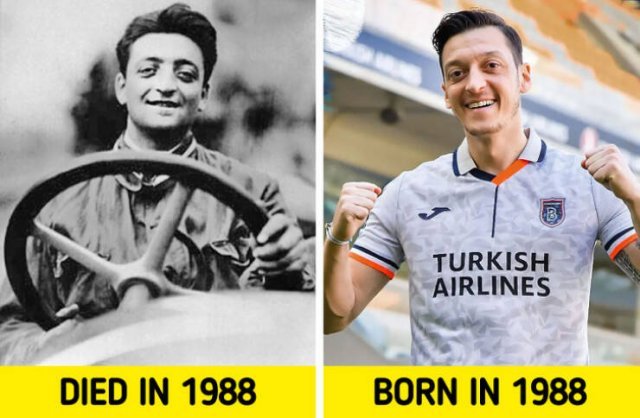
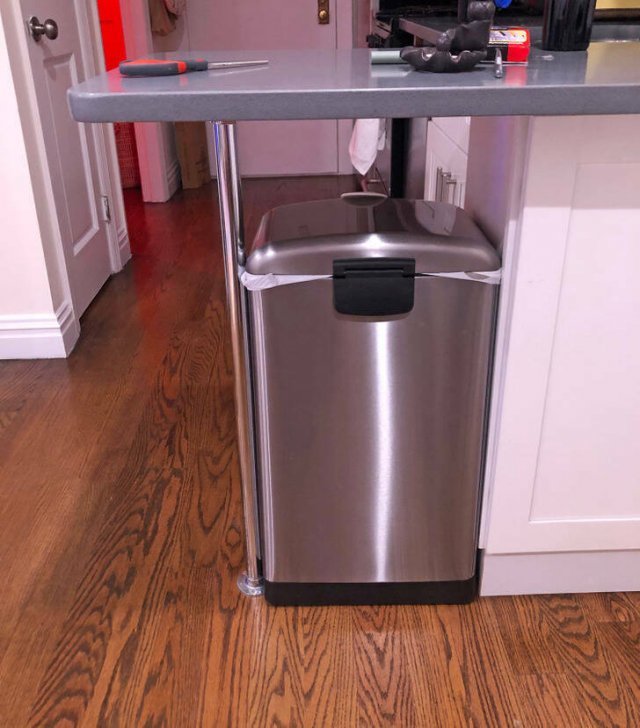

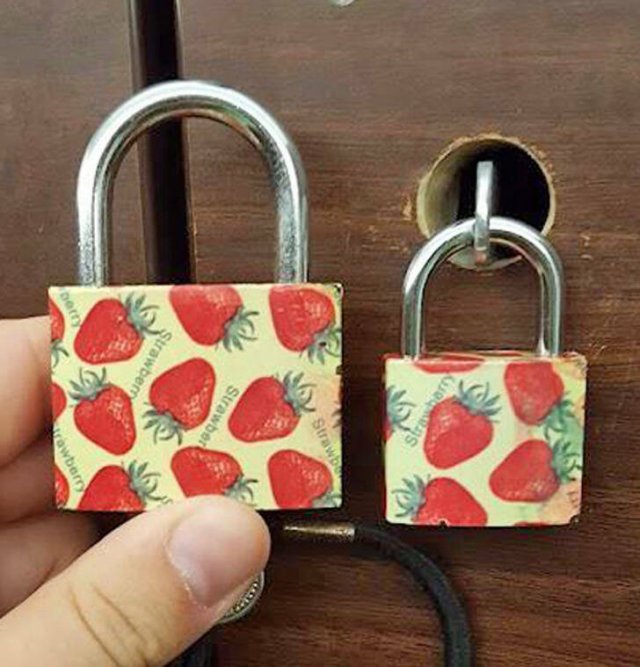
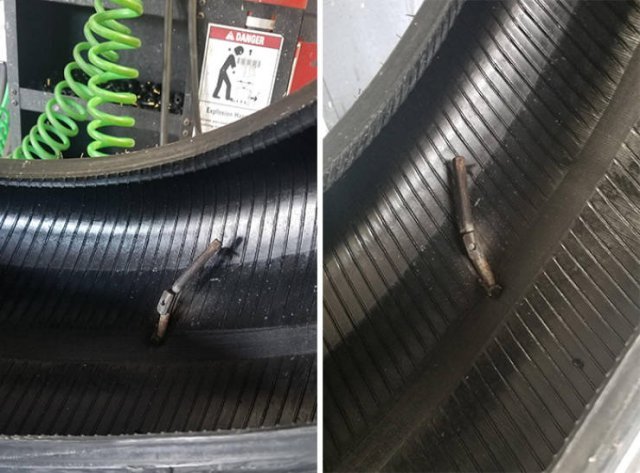
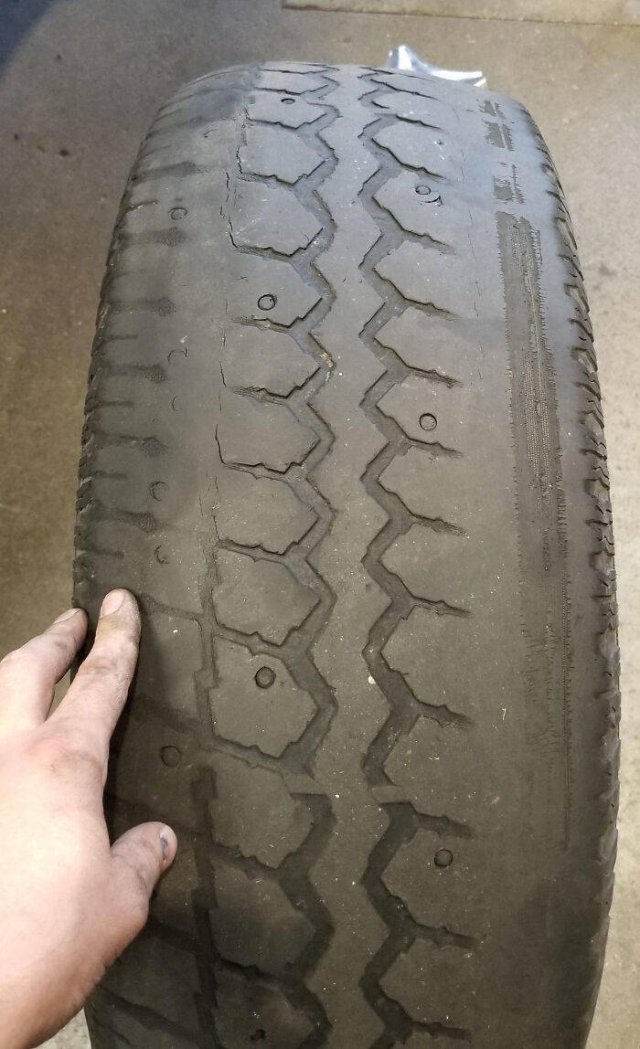

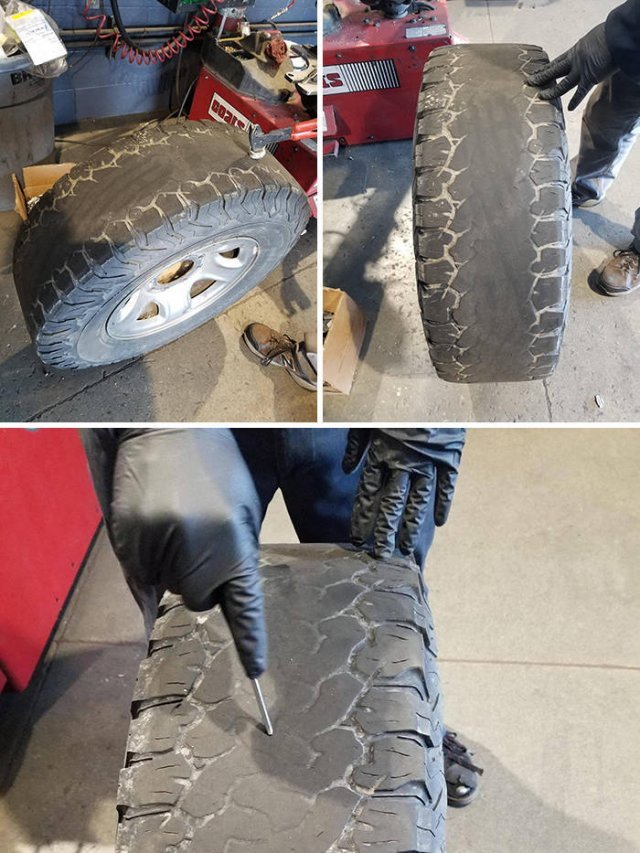
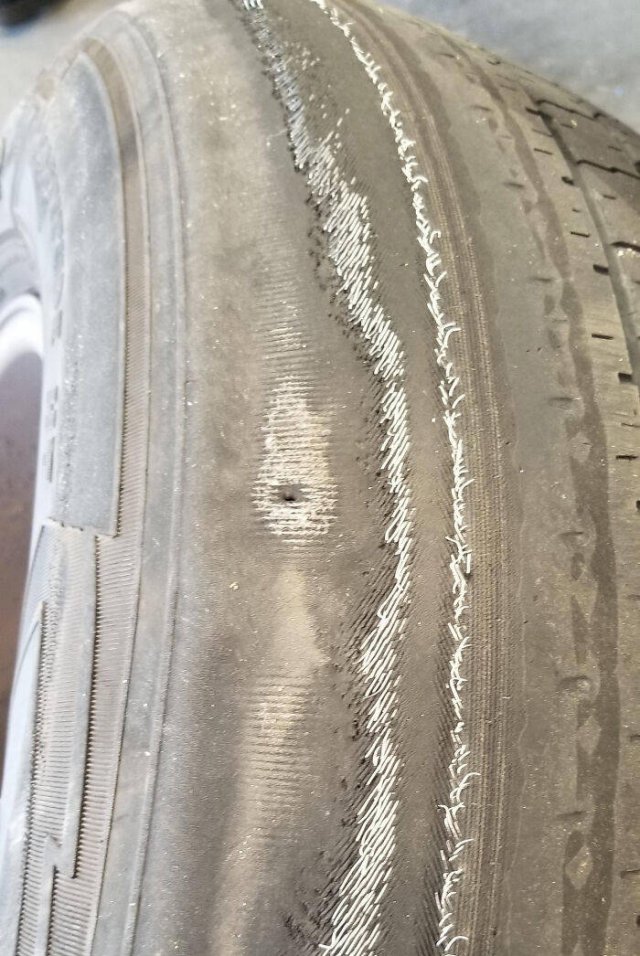
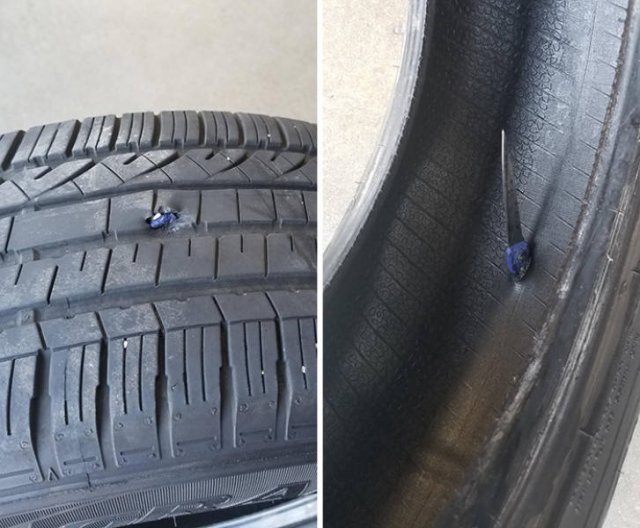
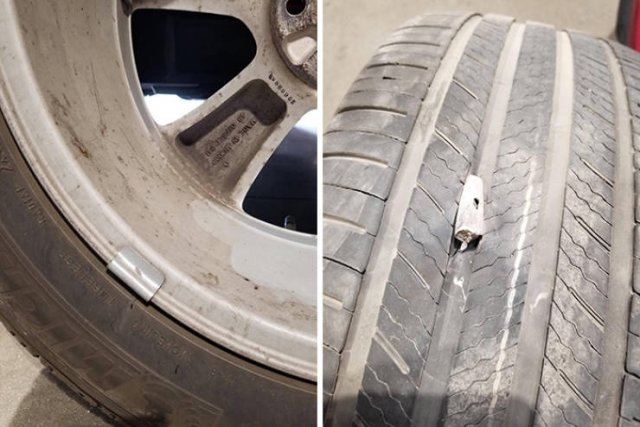
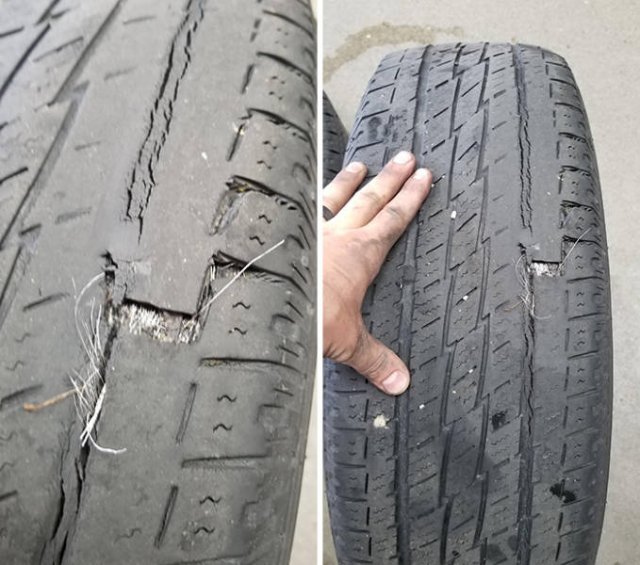
» APRIL NATIONAL CELEBRATION DAYS APRIL 27 2024
» MEMEZONA...3
» SEEING RED & FRECKLES...14
» YES,........BUT
» YES,.....BUT...2
» GET OUT THE MAP...2
» APRIL NATIONAL CELEBRATION DAYS APRIL 26 2024
» SUPER TRUCKS...
» APRIL NATIONAL CELEBRATION DAYS APRIL 25 2024
» WIZE TRIVIA QUIZ * How many pull ups did Gary Lloyd do in 24 hours to achieve the Guinness? *
» WISETRIVIA ANSWER PAGE
» IN THE LOCAL NEWS...4
» MOOMS's...9
» WORD DAILY Word of the Day: * aphorism *